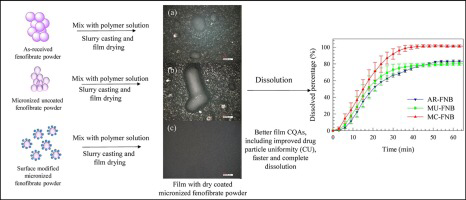- Home
- Blog
- News
- Basics
- Sources
- Agencies, Regulatory & Organisations
- CERSI Excipients Browser
- Excipient Report
- Excipient DMF List
- EXCiPACT Certified Companies
- Excipient Documentation
- Excipient EINECS Numbers
- Excipient E-Numbers
- FDA Inactive Ingredient List
- FDA GRAS Substances (SCOGS) Database
- IPEC Americas
- USP - U.S. Pharmacopeia
- Definitions
- Whitepapers / Publications
- Supplier
- Services
- Media
- Events
- 1st pharmaexcipients Poster Award
- Event Calendar
- Events featured by pharma-excipients
- 4th Annual Formulation & Drug Delivery Congress
- DDF Summit
- ExcipientFest Americas
- ExcipientFest Asia
- Global CompliancePanel
- International Conference and Exhibition on Pharmaceutics & Novel Drug Delivery Systems
- Formulation & Drug Delivery USA Congress
- Laboratory Medicine 2018
- Making Pharmaceuticals Europe
- Making Pharmaceuticals Exhibition
- Pharma Integrates
- PharmaExcipients China @CPhI China
- TTC Technology Training Center
- Jobs
- Online Sourcing
- Contact
30. August 2018
This study aimed to improve dissolution rate of valsartan in an acidic environment and consequently its oral bioavailability by solid dispersion formulation. Valsartan was selected as a model drug due to its low oral bioavailability (~23%) caused by poor solubility of this drug in the low pH region of gastrointestinal tract (GIT) and presence of absorption window in the upper part of GIT. Solid dispersions were prepared by solvent evaporation method with Eudragit® E100, Soluplus® or...
25. August 2018
Solid dispersions (SDs) represent an important formulation technique to achieve supersaturation in gastro-intestinal fluids and to enhance absorption of poorly water-soluble drugs. Extensive research was leading to a rather good understanding of SDs in the dry state, whereas the complex interactions in aqueous medium are still challenging to analyze. This paper introduces a fluorescence quenching approach together with size-exclusion chromatography to study drug and polymer interactions that...
18. August 2018
The development of oral dosage forms for poorly water-soluble active pharmaceutical ingredients (APIs) is a persistent challenge. A range of methods has been explored to address this issue, and amorphous solid dispersions (ASDs) have received increasing attention. ASDs are typically prepared by starting with a liquid precursor (a solution or melt) and applying energy for solidification. Many techniques can be used, with the emergence of electrospinning as a potent option in recent years. This...
26. March 2018
A novel hybrid microparticulate system composed of poly(lactic-co-glycolic) acid (PLGA) nanoparticles and submicron medium-chain triglyceride (MCT) droplets was fabricated to overcome the pH-dependent solubility and precipitation challenges associated with a model poorly water-soluble weak base, cinnarizine (CIN). Molecular CIN was confined within both the lipid and polymer phase of PLGA-lipid hybrid (PLH) and PLGA-lipid-mannitol hybrid (PLMH) particles, which offered significant...
28. November 2017
Recent work has established polymer strip films as a robust platform for delivery of poorly water-soluble drugs via slurry casting, in particular using stable drug nanosuspensions. Here, a simpler, robust method to directly incorporate dry micronized poorly water-soluble drug, fenofibrate (FNB), is introduced. As a major novelty, simultaneous surface modification using hydrophilic silica along with micronization was done using fluid energy mill (FEM) in order to reduce FNB hydrophobicity and...
07. November 2017
Over the last few decades, hot melt extrusion (HME) has emerged as a successful technology for a broad spectrum of applications in the pharmaceutical industry. As indicated by multiple publications and patents, HME is mainly used for the enhancement of solubility and bioavailability of poorly soluble drugs. This review is focused on the recent reports on the solubility enhancement via HME and provides an update for the manufacturing/scaling up aspects of melt extrusion. In addition, drug...
05. April 2017
Abstract Local delivery of drugs and biopharmaceuticals for the treatment of inflammatory bowel disease remains a challenge. Innovative nanomedicines with appropriate properties raise the possibility of efficient drug targeting. Hence, the overall aim of this study was to develop and characterize a protamine-based nanosystem for topical delivery of therapeutics to inflamed intestinal mucosa following oral administration. Protamine nanocapsules with a new composition were for the first time...
03. January 2017
Abstract AIDS constitutes one of the most serious infectious diseases, representing a major public health priority. Efavirenz (EFV), one of the most widely used drugs for this pathology, belongs to the Class II of the Biopharmaceutics Classification System for drugs with very poor water solubility. To improve EFV’s dissolution profile, changes can be made to the physical properties of the drug that do not lead to any accompanying molecular modifications. Therefore, the study objective was to...
10. November 2016
Abstract Many of the newly developed drugs for cancer, and some of those for cardiovascular disease, are poorly soluble in water and cannot be taken orally. This can be overcome by employing a new and effective delivery system utilizing nanotechnology. We present a new method for oral preparation of poorly soluble drugs that entails assembling (printing) drug-loaded polymeric micelles into sub-100 nm orally acceptable nanorods (NRs). Due to their small size, these NRs will have a high...
13. October 2016
Synopsis We identify a polymer discovery paradigm to complement oral drug discovery efforts. Rapid chemistry, screening, and in vitro−in vivo testing of optimal solubilizing polymers can translate otherwise-insoluble drugs into widely-accessible medicines. Abstract Polymeric excipients are crucial ingredients in modern pills, increasing the therapeutic bioavailability, safety, stability, and accessibility of lifesaving products to combat diseases in developed and developing countries...






